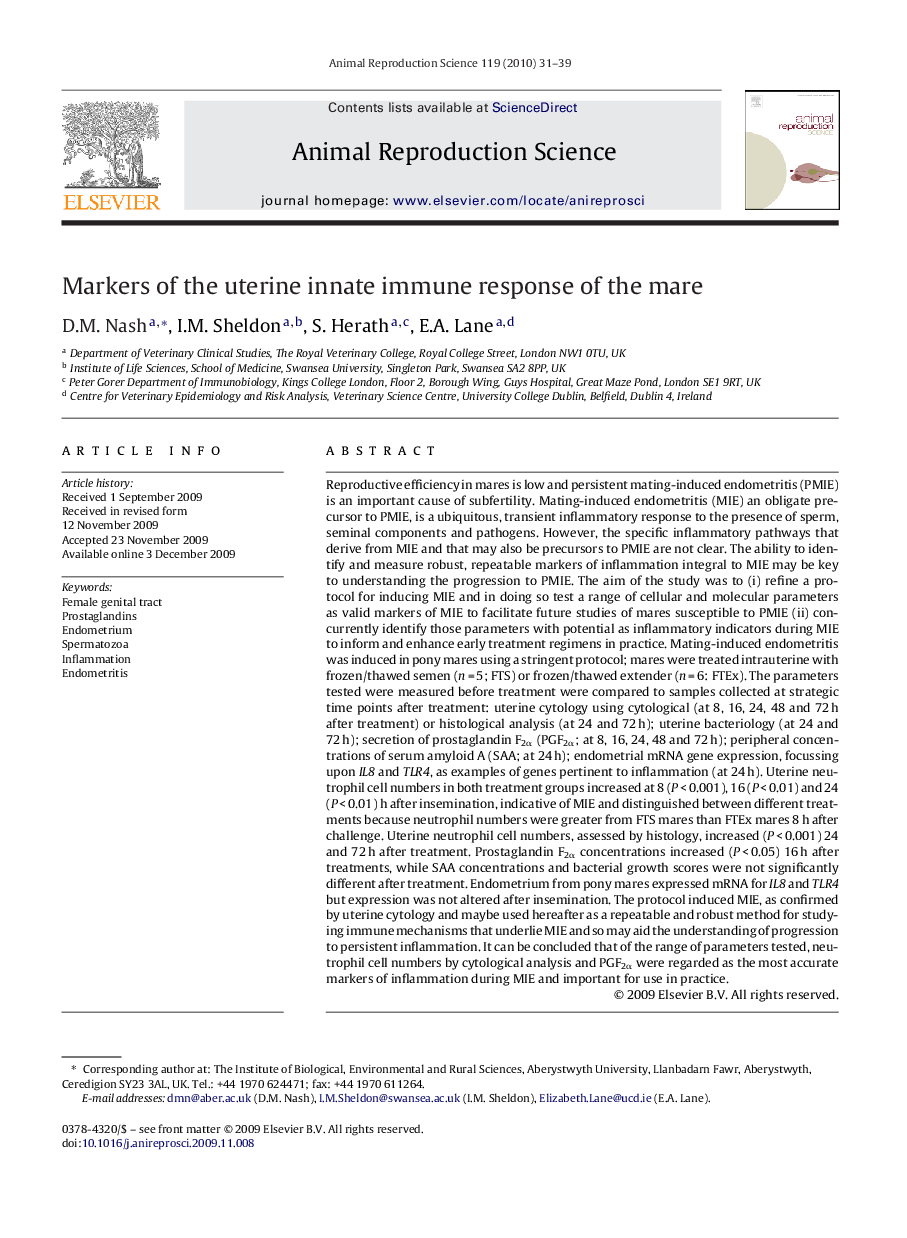| کد مقاله | کد نشریه | سال انتشار | مقاله انگلیسی | نسخه تمام متن |
|---|---|---|---|---|
| 2073826 | 1544785 | 2010 | 9 صفحه PDF | دانلود رایگان |

Reproductive efficiency in mares is low and persistent mating-induced endometritis (PMIE) is an important cause of subfertility. Mating-induced endometritis (MIE) an obligate precursor to PMIE, is a ubiquitous, transient inflammatory response to the presence of sperm, seminal components and pathogens. However, the specific inflammatory pathways that derive from MIE and that may also be precursors to PMIE are not clear. The ability to identify and measure robust, repeatable markers of inflammation integral to MIE may be key to understanding the progression to PMIE. The aim of the study was to (i) refine a protocol for inducing MIE and in doing so test a range of cellular and molecular parameters as valid markers of MIE to facilitate future studies of mares susceptible to PMIE (ii) concurrently identify those parameters with potential as inflammatory indicators during MIE to inform and enhance early treatment regimens in practice. Mating-induced endometritis was induced in pony mares using a stringent protocol; mares were treated intrauterine with frozen/thawed semen (n = 5; FTS) or frozen/thawed extender (n = 6: FTEx). The parameters tested were measured before treatment were compared to samples collected at strategic time points after treatment: uterine cytology using cytological (at 8, 16, 24, 48 and 72 h after treatment) or histological analysis (at 24 and 72 h); uterine bacteriology (at 24 and 72 h); secretion of prostaglandin F2α (PGF2α; at 8, 16, 24, 48 and 72 h); peripheral concentrations of serum amyloid A (SAA; at 24 h); endometrial mRNA gene expression, focussing upon IL8 and TLR4, as examples of genes pertinent to inflammation (at 24 h). Uterine neutrophil cell numbers in both treatment groups increased at 8 (P < 0.001), 16 (P < 0.01) and 24 (P < 0.01) h after insemination, indicative of MIE and distinguished between different treatments because neutrophil numbers were greater from FTS mares than FTEx mares 8 h after challenge. Uterine neutrophil cell numbers, assessed by histology, increased (P < 0.001) 24 and 72 h after treatment. Prostaglandin F2α concentrations increased (P < 0.05) 16 h after treatments, while SAA concentrations and bacterial growth scores were not significantly different after treatment. Endometrium from pony mares expressed mRNA for IL8 and TLR4 but expression was not altered after insemination. The protocol induced MIE, as confirmed by uterine cytology and maybe used hereafter as a repeatable and robust method for studying immune mechanisms that underlie MIE and so may aid the understanding of progression to persistent inflammation. It can be concluded that of the range of parameters tested, neutrophil cell numbers by cytological analysis and PGF2α were regarded as the most accurate markers of inflammation during MIE and important for use in practice.
Journal: Animal Reproduction Science - Volume 119, Issues 1–2, May 2010, Pages 31–39